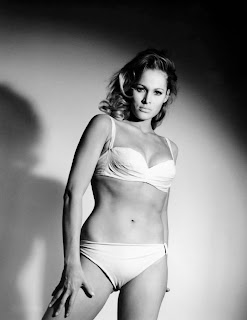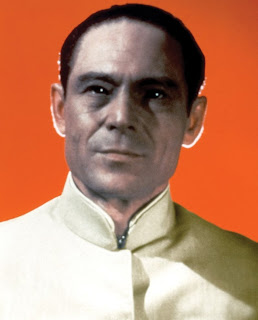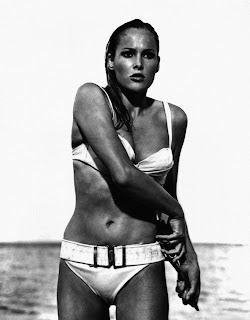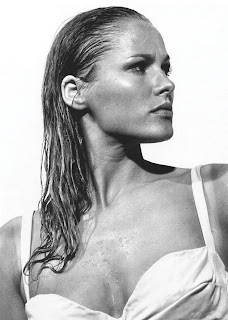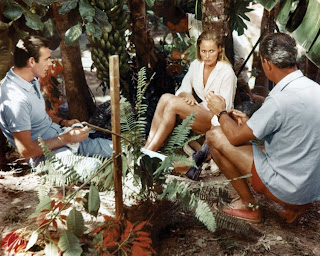DVD 01:
MST3K - K04 - Gamera Vs. Barugon.avi
MST3K - K05 - Gamera.avi
MST3K - K06 - Gamera Vs. Gaos.avi
MST3K - K07 - Gamera Vs. Zigra.avi
MST3K - K08 - Gamera Vs. Guiron.avi
MST3K - K09 - Phase IV.avi
DVD 02:
MST3K - K10 - Cosmic Princess.avi
MST3K - K11 - Humanoid Woman.avi
MST3K - K12 - Fugitive Alien.avi
MST3K - K13 - SST Death Flight.avi
MST3K - K14 - Mighty Jack.avi
MST3K - K15 - Superdome.avi
DVD 03:
MST3K - K16 - City On Fire.avi
MST3K - K17 - Time of the Apes.avi
MST3K - K18 - The Million Eyes of Su-Muru.avi
MST3K - K19 - Hangar 18.avi
MST3K - K20 - The Last Chase.avi
MST3K - K21 - Legend of the Dinosaur.avi
DVD 04:
MST3K - S01E01 - The Crawling Eye.avi
MST3K - S01E02 - The Robot vs. The Aztec Mummy.avi
MST3K - S01E03 - Mad Monster.avi
MST3K - S01E04 - Women of the Prehistoric Planet.avi
MST3K - S01E05 - The Corpse Vanishes.avi
MST3K - S01E06 - The Crawling Hand.avi
DVD 05:
MST3K - S01E07 - Robot Monster.avi
MST3K - S01E08 - The Slime People.avi
MST3K - S01E09 - Project Moonbase.avi
MST3K - S01E10 - Robot Holocaust.avi
MST3K - S01E11 - Moon Zero Two.avi
MST3K - S01E12 - Untamed Youth.avi
DVD 06:
MST3K - S01E13 - The Black Scorpion.avi
MST3K - S02E01 - Rocketship X-M.avi
MST3K - S02E02 - Sidehackers.avi
MST3K - S02E03 - Jungle Goddess.avi
MST3K - S02E04 - Catalina Caper.avi
MST3K - S02E05 - Rocket Attack USA.avi
DVD 07:
MST3K - S02E06 - Ring of Terror.avi
MST3K - S02E07 - Wild Rebels.avi
MST3K - S02E08 - Lost Continent.avi
MST3K - S02E09 - The Hellcats.avi
MST3K - S02E10 - King Dinosaur.avi
MST3K - S02E11 - First Spaceship On Venus.avi
DVD 08:
MST3K - S02E12 - Godzilla vs. Megalon.avi
MST3K - S02E13 - Godzilla vs. The Sea Monster.avi
MST3K - S03E01 - Cave Dwellers.avi
MST3K - S03E02 - Gamera.avi
MST3K - S03E03 - Pod People.avi
MST3K - S03E04 - Gamera vs. Barugon.avi
DVD 09:
MST3K - S03E05 - Stranded in Space.avi
MST3K - S03E06 - Time Of The Apes.avi
MST3K - S03E07 - Daddy-O.avi
MST3K - S03E08 - Gamera vs. Gaos.avi
MST3K - S03E09 - The Amazing Colossal Man.avi
MST3K - S03E10 - Fugitive Alien.avi
DVD 10:
MST3K - S03E11 - It Conquered the World.avi
MST3K - S03E12 - Gamera Vs. Guiron.avi
MST3K - S03E13 - Earth Vs. The Spider.avi
MST3K - S03E14 - Mighty Jack.avi
MST3K - S03E15 - Teenage Caveman.avi
MST3K - S03E16 - Gamera Vs. Zigra.avi
DVD 11:
MST3K - S03E17 - Viking Women and the Sea Serpent.avi
MST3K - S03E18 - Star Force (Fugitive Alien 2).avi
MST3K - S03E19 - War of the Colossal Beast.avi
MST3K - S03E20 - The Unearthly.avi
MST3K - S03E21 - Santa Claus Conquers The Martians.avi
MST3K - S03E22 - Master Ninja I.avi
DVD 12:
MST3K - S03E23 - The Castle of Fu-Manchu.avi
MST3K - S03E24 - Master Ninja II.avi
MST3K - S04E01 - Space Travelers.avi
MST3K - S04E02 - The Giant Gila Monster.avi
MST3K - S04E03 - City Limits.avi
MST3K - S04E04 - Teenagers From Outer Space.avi
DVD 13:
MST3K - S04E05 - Being From Another Planet.avi
MST3K - S04E06 - Attack Of The Giant Leeches.avi
MST3K - S04E07 - The Killer Shrews.avi
MST3K - S04E08 - Hercules Unchained.avi
MST3K - S04E09 - The Indestructible Man.avi
MST3K - S04E10 - Hercules Against The Moon Men.avi
DVD 14:
MST3K - S04E11 - The Magic Sword.avi
MST3K - S04E12 - Hercules And The Captive Women.avi
MST3K - S04E13 - Manhunt In Space.avi
MST3K - S04E14 - Tormented.avi
MST3K - S04E15 - The Beatniks.avi
MST3K - S04E16 - Fire Maidens Of Outer Space.avi
DVD 15:
MST3K - S04E17 - Crash of the Moons.avi
MST3K - S04E18 - Attack of the The Eye Creatures.avi
MST3K - S04E19 - The Rebel Set.avi
MST3K - S04E20 - The Human Duplicators.avi
MST3K - S04E21 - Monster A-Go-Go.avi
MST3K - S04E22 - The Day The Earth Froze.avi
DVD 16:
MST3K - S04E23 - Bride of the Monster.avi
MST3K - S04E24 - Manos the Hands of Fate.avi
MST3K - S05E01 - Warrior of the Lost World.avi
MST3K - S05E02 - Hercules.avi
MST3K - S05E03 - Swamp Diamonds.avi
MST3K - S05E04 - Secret Agent Super Dragon.avi
DVD 17:
MST3K - S05E05 - The Magic Voyage of Sinbad.avi
MST3K - S05E06 - Eegah!.avi
MST3K - S05E07 - I Accuse My Parents.avi
MST3K - S05E08 - Operation Double 007.avi
MST3K - S05E09 - The Girl In Lovers Lane.avi
MST3K - S05E10 - The Painted Hills.avi
DVD 18:
MST3K - S05E11 - The Gunslinger.avi
MST3K - S05E12 - Mitchell.avi
MST3K - S05E13 - The Brain That Wouldn't Die.avi
MST3K - S05E14 - Teenage Strangler.avi
MST3K - S05E15 - The Wild, Wild World Of Batwoman.avi
MST3K - S05E16 - Alien From LA.avi
DVD 19:
MST3K - S05E17 - Beginning Of The End.avi
MST3K - S05E18 - The Atomic Brain.avi
MST3K - S05E19 - Outlaw.avi
MST3K - S05E20 - Radar Secret Service.avi
MST3K - S05E21 - Santa Claus.avi
MST3K - S05E22 - Teenage Crime Wave.avi
DVD 20:
MST3K - S05E23 - Village of the Giants.avi
MST3K - S05E24 - 12 To the Moon.avi
MST3K - S06E01 - Girls Town.avi
MST3K - S06E02 - Invasion USA.avi
MST3K - S06E03 - The Dead Talk Back.avi
MST3K - S06E04 - Zombie Nightmare.avi
DVD 21:
MST3K - S06E05 - Colossus And The Headhunters.avi
MST3K - S06E06 - The Creeping Terror.avi
MST3K - S06E07 - Bloodlust.avi
MST3K - S06E08 - Code Name Diamond Head.avi
MST3K - S06E09 - The Skydivers.avi
MST3K - S06E10 - The Violent Years.avi
DVD 22:
MST3K - S06E11 - Last of the Wild Horses.avi
MST3K - S06E12 - The Starfighters.avi
MST3K - S06E13 - The Sinister Urge.avi
MST3K - S06E14 - San Francisco International.avi
MST3K - S06E15 - Kitten With a Whip.avi
MST3K - S06E16 - Racket Girls.avi
DVD 23:
MST3K - S06E17 - The Sword and the Dragon.avi
MST3K - S06E18 - High School Big Shot.avi
MST3K - S06E19 - Red Zone Cuba.avi
MST3K - S06E20 - Danger! Death Ray.avi
MST3K - S06E21 - Beast Of Yucca Flats.avi
MST3K - S06E22 - Angels Revenge.avi
DVD 24:
MST3K - S06E23 - The Amazing Transparent Man.avi
MST3K - S06E24 - Samson vs. The Vampire Women.avi
MST3K - S07E01 - Night Of The Blood Beast.avi
MST3K - S07E02 - The Brute Man.avi
MST3K - S07E03 - Deathstalker and the Warriors From Hell.avi
MST3K - S07E04 - The Incredible Melting Man.avi
DVD 25:
MST3K - S07E05 - Escape 2000.avi
MST3K - S07E06 - Laserblast.avi
MST3K - S08E01 - Revenge of the Creature.avi
MST3K - S08E02 - The Leech Woman.avi
MST3K - S08E03 - The Mole People.avi
MST3K - S08E04 - The Deadly Mantis.avi
DVD 26:
MST3K - S08E05 - The Thing That Couldn't Die.avi
MST3K - S08E06 - The Undead.avi
MST3K - S08E07 - Terror From The Year 5000.avi
MST3K - S08E08 - The She-Creature.avi
MST3K - S08E09 - I Was a Teenage Werewolf.avi
MST3K - S08E10 - The Giant Spider Invasion.avi
DVD 27:
MST3K - S08E11 - Parts The Clonus Horror.avi
MST3K - S08E12 - The Incredibly Strange Creatures....avi
MST3K - S08E13 - Jack Frost.avi
MST3K - S08E14 - Riding With Death.avi
MST3K - S08E15 - Agent For H.A.R.M.avi
MST3K - S08E16 - Prince Of Space.avi
DVD 28:
MST3K - S08E17 - Horror of Party Beach.avi
MST3K - S08E18 - Devil Doll.avi
MST3K - S08E19 - Invasion of the Neptune Men.avi
MST3K - S08E20 - Space Mutiny.avi
MST3K - S08E21 - Time Chasers.avi
MST3K - S08E22 - Overdrawn At the Memory Bank.avi
DVD 29:
MST3K - S09E01 - The Projected Man.avi
MST3K - S09E02 - The Phantom Planet.avi
MST3K - S09E03 - Puma Man.avi
MST3K - S09E04 - Werewolf.avi
MST3K - S09E05 - The Deadly Bees.avi
MST3K - S09E06 - The Space Children.avi
DVD 30:
MST3K - S09E07 - Hobgoblins.avi
MST3K - S09E08 - The Touch Of Satan.avi
MST3K - S09E09 - Gorgo.avi
MST3K - S09E10 - The Final Sacrifice.avi
MST3K - S09E11 - Devil Fish.avi
MST3K - S09E12 - The Screaming Skull.avi
DVD 31:
MST3K - S09E13 - Quest Of The Delta Knights.avi
MST3K - S10E01 - Soultaker.avi
MST3K - S10E02 - Girl in Gold Boots.avi
MST3K - S10E03 - Merlin's Shop Of Mystical Wonders.avi
MST3K - S10E04 - Future War.avi
MST3K - S10E05 - Blood Waters of Dr. Z.avi
DVD 32:
MST3K - S10E06 - Boggy Creek II.avi
MST3K - S10E07 - Track Of The Moon Beast.avi
MST3K - S10E08 - Final Justice.avi
MST3K - S10E09 - Hamlet.avi
MST3K - S10E10 - It Lives By Night.avi
MST3K - S10E11 - The Horrors of Spider Island.avi
DVD 33:
MST3K - S10E12 - Squirm.avi
MST3K - S10E13 - Diabolik.avi
DVD 34:
MST3K - S01 - PSXUnderground.avi
MST3K - S02 - CBS Saturday Morning News.avi
MST3K - S03 - 1st Annual Summer Blockbuster Review.avi
MST3K - S04 - 2nd Annual Summer Blockbuster Review.avi
MST3K - S05 - Poopie Parade of Values.avi
MST3K - S06 - World News Guest Appearance.avi
MST3K - S07 - The Making of MST3K.avi
MST3K - S08 - This is MST3K.avi
MST3K - S09 - Turkey Day '95.avi
MST3K - S10 - Academy Of Robots' Choice Awards Special.avi
MST3K - S11 - Shorts (Volume 1).avi
MST3K - S12 - Shorts (Volume 2).avi
MST3K - S13 - Shorts (Volume 3).avi
MST3K - S14 - Little Gold Statue Preview Special.avi
MST3K - S15 - Turkey Day '92.avi
MST3K - S16 - SF Vortex 1-24-97.avi
DVD 35:
MST3K - Mike Nelson and Kevin Murphy Interview.mpg
MST3K - Mr. B's Lost Shorts.avi
MST3K - S07E01 - Night Of The Blood Beast (Turkey Day).avi
MST3K - S17 - Home Game Behind the Scenes.avi
MST3K - S18 - MTV Week in Rock Appearance.avi
MST3K - S19 - Assignment Venezuela.mpg
MST3K - S20 - Scrapbook.avi
Reefer Madness - Commentary By Mike Nelson (1938-2004).avi
Space Ghost C2C - 023 - Joel Hodgson - $20.01.avi
Joel Hodgson - 8th Annual Young Comedians Show.avi
















